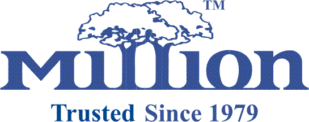2 minutes read
Beware of office hazards. Here are 5 hazardous spots in your office.
Slips, trips, and falls
These are the most common type of accident in offices, and can be caused by a variety of factors, such as wet floors, uneven surfaces, cluttered walkways, and loose cords.
Ergonomic injuries
These can occur when workers maintain awkward postures or perform repetitive tasks for long periods of time. Common ergonomic injuries include carpal tunnel syndrome, tendonitis, and back pain.
Poor lighting and eye strain
Inadequate or excessive lighting can both cause eye strain, which can lead to headaches, fatigue, and blurred vision.
Indoor air pollution
This can be caused by a variety of factors, such as dust mites, mold, pollen, and chemicals from cleaning products and office equipment. Indoor air pollution can lead to a variety of health problems, including respiratory infections, allergies, and asthma.
Fire safety hazards
This can include things like overloaded electrical outlets, flammable materials stored improperly, and blocked fire exits. Fire safety hazards can lead to serious injuries and death.
Other hazardous spots in an office may include:
- Storage rooms: These can be cluttered and contain heavy objects, which can lead to slips, trips, and falls.
- Stairs: Stairs can be slippery and dangerous, especially if they are not well-lit or maintained.
- Loading docks: These areas can be busy and chaotic, and can contain hazards such as forklifts and moving vehicles.
- Lunchrooms: Spills and food debris can create slip hazards in lunchrooms.
- Bathrooms: Wet floors and slippery tiles can create slip hazards in bathrooms.
It is important to be aware of the hazards in your office so that you can take steps to avoid them. Here are some tips for staying safe at work.
- Be aware of your surroundings and watch out for potential hazards.
- Keep your work area clean and organized.
- Use proper lifting techniques when moving heavy objects.
- Take breaks throughout the day to stretch and move around.
- Report any unsafe conditions to your supervisor or safety manager.
By following these tips, you can help to create a safe and healthy work environment for yourself and your colleagues.

